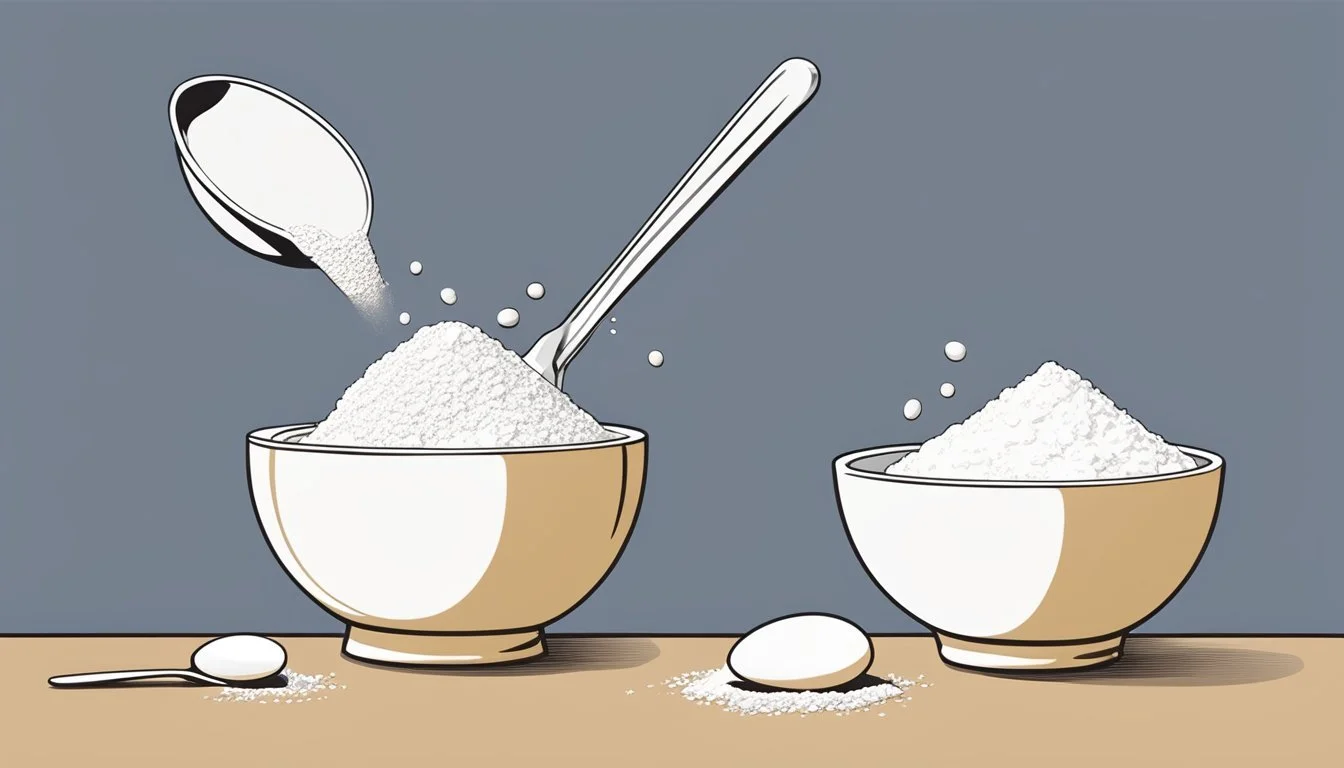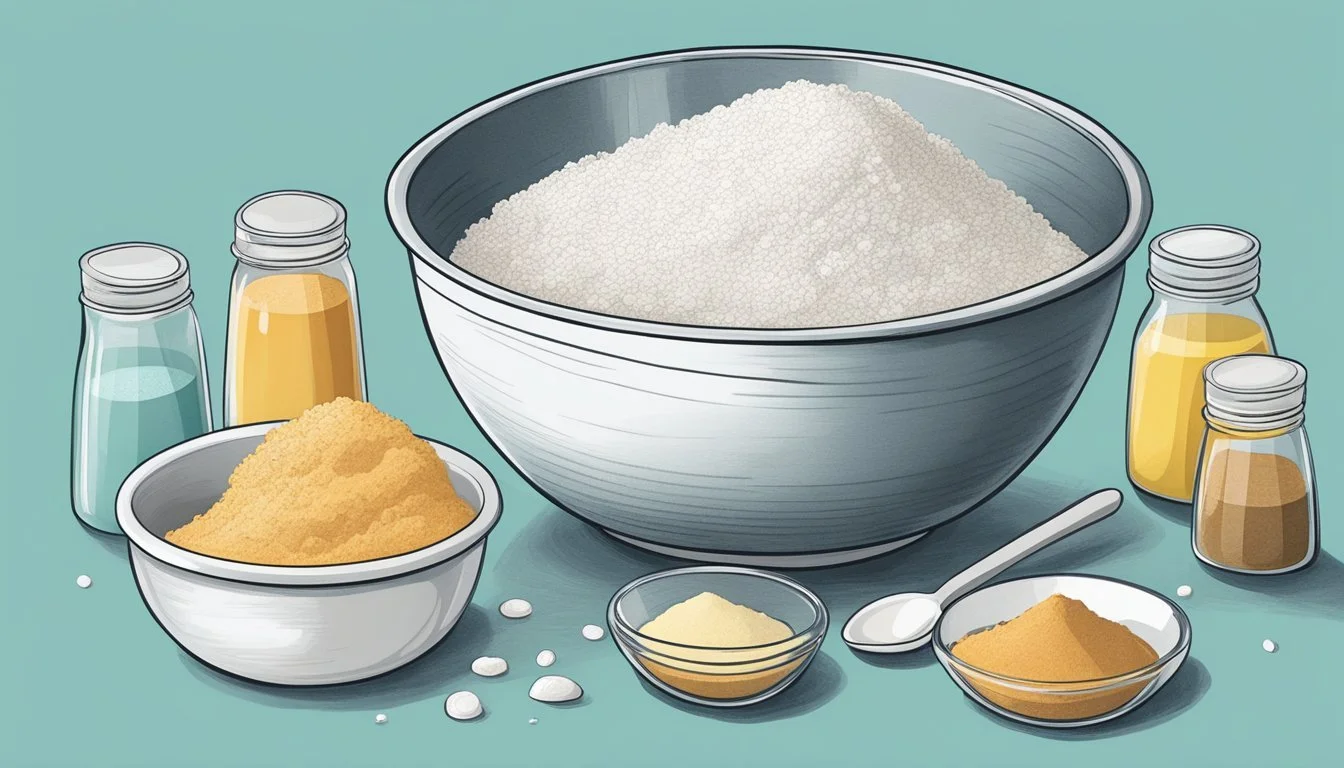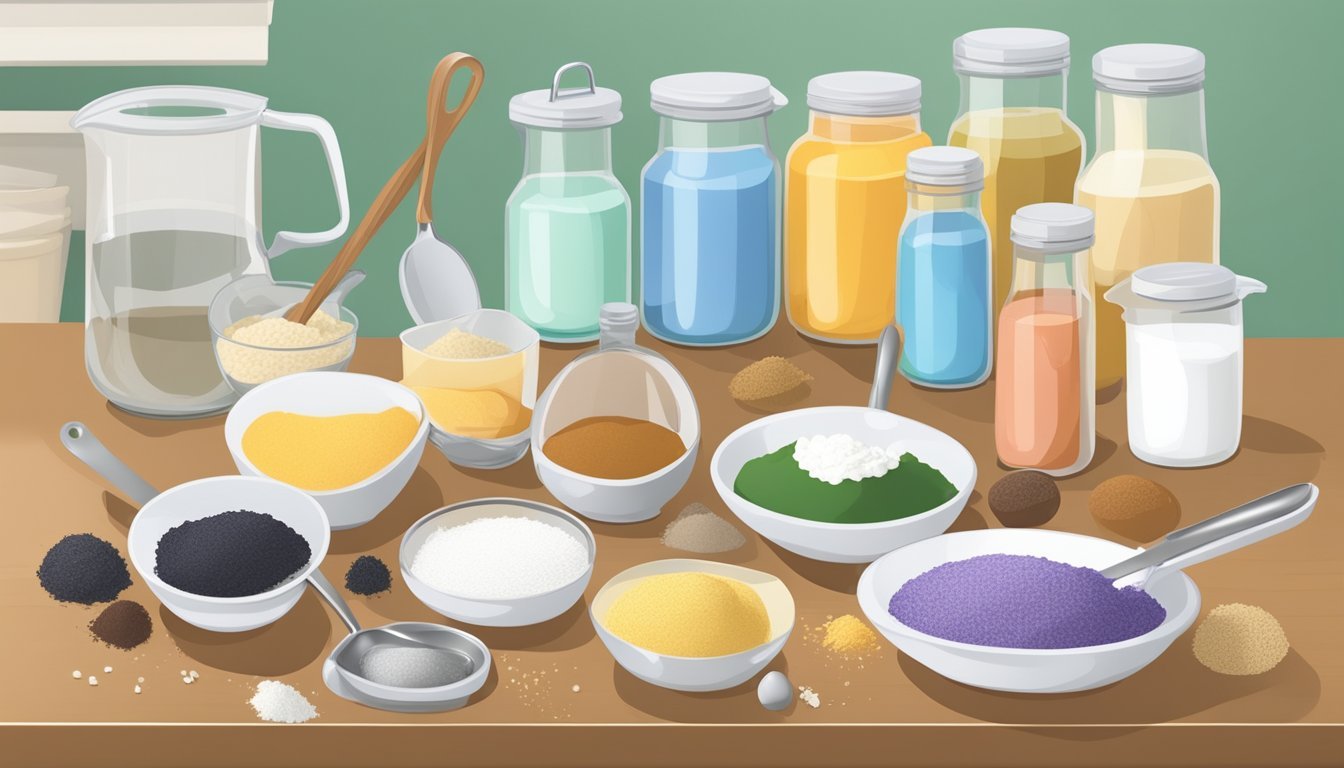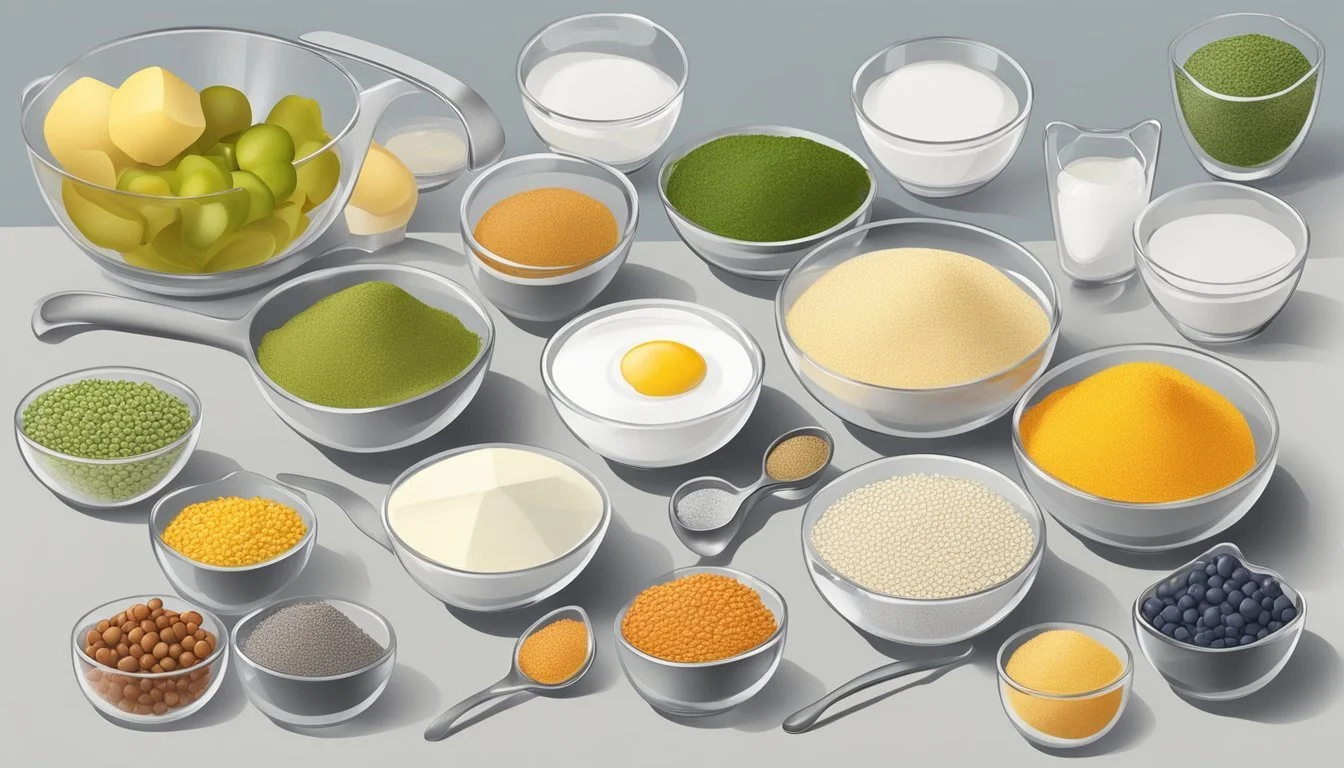How to Measure Ingredients for a Homemade Cake Mix
Precision for Perfect Bakes
Measuring ingredients accurately is critical when creating a homemade cake mix. A cake's texture, structure, and taste can be altered by even the smallest deviations from a recipe. When preparing a dessert as seemingly straightforward as homemade cake, consistency begins with precise measurement. Each component from the flour to the sugar has specific properties that contribute to the chemical reaction that occurs during the baking process.
Those embarking on the journey of preparing homemade cake mix should approach their recipes with precision, ensuring that each ingredient is measured correctly. Dry ingredients should be spooned into the measuring cup and then leveled off to ensure an accurate amount, avoiding packing or settling which could lead to using more than the recipe calls for.
When it comes to wet ingredients, using graduated measuring cups designed for liquids and checking the measurement at eye level will help bakers achieve the correct proportions. All these steps ensure that the balance of ingredients promotes the ideal texture and rise for the cake, making the baking experience enjoyable and the dessert satisfying.
Fundamentals of Homemade Cake Mix
Creating a homemade cake mix requires an understanding of the ingredients involved and precision in their measurement to ensure a perfect bake every time. These two aspects are key for any baker to master the art of cake mix preparation.
Understanding Cake Mix Ingredients
When preparing a homemade cake mix, simple ingredients are typically involved, which include flour, sugar, baking powder, and salt. These ingredients form the foundation of many cake mix recipes:
Flour provides the structure;
Sugar adds sweetness and affects texture;
Baking powder acts as a leavening agent to help the cake rise;
Salt enhances flavor and controls yeast in recipes that include it.
For a basic homemade cake mix, one might combine:
2 3/4 cups flour
1 3/4 cups sugar
2 teaspoons baking powder
1/2 teaspoon salt
Importance of Measuring Technique
The accuracy of measuring out these ingredients cannot be overstated. Even slight variations can lead to changes in texture and structure of the final cake. A measuring cup designated for dry ingredients is essential for precision.
Flour: To measure flour correctly, fluff it up in the container, spoon it into the measuring cup, and level it off with the back of a knife.
Sugar and Salt: These should be measured in a similar fashion to flour, but they can be more easily leveled off with the straight edge of a knife.
Baking Powder: Since it's a leavening agent, ensure that the measured amount is exact, using the flat edge of a knife to remove excess.
Careful measurement ensures that the cake mix is consistent and yields reliable results with each bake. Using simple, precise techniques contributes to a successful homemade cake mix.
The Role of Ingredients
Accurately measuring ingredients is pivotal in baking, where precision affects the texture, flavor, and rise of the cake. Each component serves a unique function, and understanding their roles helps ensure the success of your homemade cake mix.
Dry Ingredients
Flour is the foundation and provides structure to cakes. All-purpose flour is versatile, while cake flour offers a lighter, softer texture. Sugar, whether granulated or in other forms, sweetens and contributes to the tenderness and browning of the cake. Baking powder and baking soda are chemical leaveners that help the cake rise. A pinch of salt can enhance flavors and balance the sweetness.
Flour: All-purpose or cake flour for structure
Sugar: Granulated for sweetness and browning
Baking Powder/Baking Soda: For rise and airiness
Salt: To enhance and balance flavors
Wet Ingredients
Eggs bind the ingredients and add moisture; large eggs are typically used in recipes. Milk, including whole milk or buttermilk, incorporates fat for richness and helps in achieving the desired consistency. Oil or melted butter contributes to the moistness and flavor of the cake.
Eggs: Binding and moisture
Milk/Buttermilk: Fat content and consistency
Oil/Melted Butter: Moistness and flavor
Flavorings and Additives
Vanilla extract is a common flavoring that gives cakes a pleasant fragrance and taste. Chocolate chips, nuts, and sprinkles are popular additives that introduce texture and additional flavors specific to cake varieties like chocolate, vanilla, spice, white, and yellow cakes.
Vanilla Extract: Fragrance and taste
Chocolate Chips/Nuts/Sprinkles: Texture and extra flavors
Preparation Techniques
Precision in measuring ingredients is crucial for a homemade cake mix to ensure optimal flavor and texture. Each component has a specific role that affects the consistency and structure of the final cake.
Combining Dry and Wet Ingredients
Dry ingredients are often combined in a separate bowl before being introduced to wet ingredients. One should sieve ingredients like flour and cocoa powder to add air and remove lumps, which contributes to a light and fluffy cake texture. When combining, gradually adding dry to wet ingredients and gently folding with a whisk avoids over mixing, ensuring a light and fluffy texture without deflating the incorporated air.
Ensuring Consistency
Achieving a consistent batter is key. Ingredients should be at room temperature to blend more smoothly and emulsify properly, resulting in an even texture throughout the cake. For a homogeneous mix, one must thoroughly whisk until the batter appears uniform without overworking it, which can lead to a dense cake.
Common Substitutions
Flexibility in ingredients often requires substitutes, but they must perform similarly to the original. Buttermilk can replace regular milk to enhance tenderness, and caster sugar can be swapped for cane sugar for a finer crumb. It’s critical to use the proper substitute ratios to maintain the desired consistency and flavor profile of the cake mix.
Baking Process
When baking a cake, precision in oven preparation, pan setup, and testing for doneness are critical steps to achieve a perfect result.
Oven Preparation
The baker should preheat the oven to the specific temperature required by the recipe, commonly 350ºF for many cakes. Preheating the oven ensures that the cake begins to cook immediately and evenly once placed inside. If multiple racks are used, ensure they are spaced allowing for proper circulation, especially for layer cakes.
Pan Preparation and Baking Time
Choosing the right pan is crucial for any cake; a 9-inch pan is standard for layer cakes, while cupcake pans are needed for cupcakes. Line the chosen pan with appropriate parchment paper or cupcake liners to prevent sticking and achieve easy removal. For a layer cake, apply a thin coat of butter and a dusting of flour to the sides of the pan. Baking time will vary; a full batch of cake mix will typically take around 25-30 minutes for a 9-inch cake and 15-20 minutes for cupcakes. Always refer to the recipe for the most accurate time.
Testing for Doneness
To test for doneness, insert a toothpick or cake tester into the center of the cake. If it comes out clean with no batter attached, the cake is done. Edges of the cake should pull away from the pan slightly, and the cake should spring back when gently pressed. This test is simple yet reliable for both birthday and simple layer cakes. Don't rely solely on time—checking visually and tactically ensures a fully baked cake.
By following these guidelines, a baker ensures their cake is prepared with the attention to detail that baking demands.
Storing and Shelf Life
For homemade cake mix, proper storage is essential to maintain freshness and extend shelf life. One should pay particular attention to the type of container used and the environment it's stored in, as well as understanding when the mix is past its prime for use.
Airtight Storage Solutions
To ensure the longevity of homemade cake mix, it should be stored in an airtight container. Appropriate containers could be zip-top bags with all the air squeezed out or airtight glass jars. If the mix contains any perishable items, such as nuts, storing it in the refrigerator or freezer can prevent spoilage and extend its shelf life significantly.
Determining Expiry
Unlike store-bought mixes with clear expiration dates, homemade cake mix shelf life varies. The absence of preservatives means the shelf life is shorter. A rule of thumb is the mix should be used within three to six months when kept in a pantry. To help remember when a mix was made, always label the container with the date of creation. If there are any signs of discoloration, off-odors, or clumping, it is best to discard the mix to avoid potential spoilage.
Advanced Tips and Variations
Crafting the perfect cake mix from scratch involves precision and creativity. This section is dedicated to those who wish to take their homemade cake concoctions to the next level, with specialized recipes and innovative decoration techniques.
Creating Specialized Cake Mixes
Gluten-Free Options: For a homemade white cake mix without gluten, one must substitute commonly used wheat flour with a blend of gluten-free flours. A mix of white rice flour, almond flour, and a small amount of xanthan gum can act as an excellent base. It's essential to measure these ingredients by weight for accuracy, ensuring that the cake mix has the correct structure and doesn't crumble.
Chocolate and Vanilla Flavors: When adapting a vanilla cake recipe to chocolate, increment the quantity of dry cocoa powder added, and adjust the ratio of flour to ensure the cake maintains moisture and does not become too dense. For a richer vanilla flavor in homemade vanilla cake mix, introduce real vanilla beans or high-quality vanilla extract. Vanilla bean paste offers flecks of vanilla bean throughout the cake for both flavor and aesthetic appeal.
Specialty Mix Ingredients Note Gluten-Free White Cake Mix Gluten-free flour blend, sugar, baking powder, salt Use precise measurements and sift ingredients Chocolate Cake Mix All-purpose flour, unsweetened cocoa powder, sugar, baking powder, salt Adjust flour for cocoa addition Homemade Vanilla Cake Mix All-purpose flour, vanilla bean paste, sugar, baking powder, salt High-quality vanilla enhances flavor
Decorations and Frosting Techniques
Frosting Varieties: A cake isn't complete without a complementary frosting. Buttercream frosting is versatile and can be easily flavored or colored. For a tangy twist, cream cheese frosting pairs well with carrot or red velvet cakes. Always ensure that frosting is spread evenly for a professional appearance.
Technique Tips: Use a piping bag with various tip shapes for different decorative effects. Rosettes, stars, and simple borders can turn an ordinary homemade cake into a visual delight.
Frosting Type Best Paired With Tip Buttercream Frosting Almost any cake Can be colored and flavored Cream Cheese Frosting Carrot and red velvet cakes Ensure it's at room temperature for spreading
When creating a boxed cake mix experience with homemade quality, these advanced tips and variations can help individuals tailor their baking to specific needs and artistic visions. Precision in measurement and thoughtful adaptation of techniques allows for superior results and a range of delectable desserts.
Nutritional Information
When preparing homemade cake mix, understanding the nutritional content helps bakers ensure that their cake fits within dietary needs. The breakdown by serving is crucial for managing calorie intake and nutritional balance.
Calculating Calories and Portions
Each ingredient contributes to the total calorie count of the cake mix. Flour, sugar, and milk are the primary calorie contributors. To calculate the nutritional content, bakers must account for the quantity of each ingredient and the number of servings produced by the mix.
For a basic cake mix, a baker can estimate the calories using typical values:
All-purpose flour: Approximately 455 calories per cup
Granulated sugar: Roughly 774 calories per cup
Powdered milk: About 635 calories per cup (if used)
A sample cake mix might include approximately 2¾ cups of flour, 1½ cups of sugar, and additional elements like baking powder and salt that have negligible calories. If the mix includes powdered milk, that adds to the total. Assuming the recipe yields 24 cupcakes, or 12 larger portions, the calories per serving can be calculated by tallying the calories from each component and dividing by the number of servings.
To convey detailed nutritional facts, a table is helpful:
Ingredient Quantity Calories per Quantity Total Calories Flour 2¾ cups 455 per cup 1251.25 Sugar 1½ cups 774 per cup 1161 Powdered Milk (optional) ½ cup 635 per cup 317.5 Total (without milk) 2412.25 Total (with milk) 2729.75
Note: The nutritional facts for individual ingredients can vary by brand and quality, so bakers should check the packaging for precise information. Additionally, wet ingredients like eggs, oil, or butter added later will contribute additional calories and should be factored into the final nutritional profile per serving.
FAQs and Troubleshooting
When making a homemade cake mix, accuracy in measuring ingredients and understanding how to address common baking issues are crucial. This section aims to provide answers to frequently asked questions and solutions to typical challenges encountered during the baking process.
Frequently Asked Questions
Q: How can one ensure light and fluffy texture when making a DIY cake mix?
A: For a light and fluffy texture, they should fluff up the flour with a fork before spooning it into the measuring cup and then level it off with a straight edge to ensure precise measurements.
Q: Is homemade cake mix suitable for gifting?
A: Yes, homemade cake mix makes an excellent gift. They should ensure to include clear instructions on how to use the mix and list any additional wet ingredients that the recipient will need to add.
Common Baking Challenges
Measuring Dry Ingredients Incorrectly
Baking requires precision. If someone scoops out the dry ingredient directly with the measuring cup, it can lead to having too much flour, resulting in a denser cake.
Recommendation: They should fluff, spoon, and level off the dry ingredients.
Batter Too Dense or Dry
If their cake mix or the finished batter seems too dense, they may have over-measured the dry ingredients or under-measured the wet ones.
Recommendation: They should double-check measurements and consistency, adjusting with a small amount of liquid if necessary, but avoid altering the established recipe ratios significantly.








